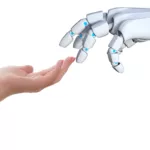Researchers at Carnegie Mellon University (CMU) have found that virtual artifacts may be as important to teenagers as a favorite book that a parent once read to them.
That means that digital imagery, Facebook updates, online music collections, email threads and other immaterial artifacts of today’s online world have become quite important to the lives of teenagers.
The fact that virtual possessions don’t have a physical form may actually increase their value, researchers at Carnegie Mellon’s Human-Computer Interaction Institute (HCII) and School of Design revealed in a study of 21 teenagers. A more complete understanding of the feelings people can develop for these pieces of data could be factored into technology design and could provide ventures for new products and services, they said.
“A digital photo is valuable because it is a photo but also because it can be shared and people can comment on it,” said John Zimmerman, associate professor of human-computer interaction and design.
For the youngsters in the CMU study, a digital photo that friends have tagged, linked and marked is more meaningful than a photo in a frame or a drawer.
One of the subjects said she always takes lots of photos at events and uploads them immediately so she and her friends can tag them and talk about them.
“It feels like a more authentic representation of the event,” the 16-year-old told the researchers. “We comment and agree on everything together … then there’s a shared sense of what happened.”

The researchers — Jodi Forlizzi, associate professor of design and human-computer interaction, and William Odom, a Ph.D. student in HCII, along with Zimmerman — presented their study May 10 at CHI 2011, the Association for Computing Machinery’s Conference on Human Factors in Computing Systems in Vancouver. CHI conference leaders awarded the study Best Paper recognition.
The fondness people have for collecting and assigning meaning to what are often commonplace objects is well known.
“A house is just a place to keep your stuff while you go out and get more stuff,” George Carlin famously observed. But most of the stuff that often is cherished — printed books, photographs, music CDs — is being replaced by electronic equivalents, such as e-books and iPod downloads. And computers are creating artifacts that have never been stuff — social networking profiles, online game avatars, Foursquare badges — but can hold meaning.
In their study, Odom, Zimmerman and Forlizzi enlisted nine girls and 12 boys, ages 12-17, from middle- and upper-middle-class families who have access to the Internet, mobile phones and other technology. The researchers questioned them about their everyday lives, their use of technology and about the physical and virtual possessions that they place value in.
If a house is just a place to store your stuff, then a mobile phone could be considered a treasure box that gives you access to your stuff, the interviews showed. The “placelessness” of virtual trinkets stored online rather than on a computer often enhanced their value because they were always available in the digital realm. One 17-year-old participant claimed that she uploaded all of her photos online so that she could access them whether she was in her bed or at the mall. “Obviously, I can’t look at them all and that’s not the point,” she said. “I like knowing that they’ll be there if I want them.”
The level which users can change and personalize online objects impacts their value. A 17-year-old subject spent a lot of time developing an avatar for the video game Halo and had a lot of comments and input from friends. The original drawings, he said, “are definitely something I’ll keep.” Amassing “metadata” — online time stamps, activity logs and annotations — also increased the value of virtual possessions.
Participants said that they could display things online, such as a photograph of a boyfriend disliked by parents, which were important to their identity but couldn’t be displayed in a bedroom. The online world allows the teenagers to present different sides of themselves to groups of friends or to family. Creating privacy controls and other tools for deciding who gets to see what virtual possessions in which circumstances is a need and an opportunity for technology developers, the researchers said.
The tireless archiving of virtual possessions sometimes leads to real dilemmas, they observed. If users are cooperatively creating these artifacts — a tagged and annotated photo, for example — then is a consensus of the users needed for deleting them?
“In the future, our research will explore what happens when the boundaries of virtual and physical possessions are more blurred,” Forlizzi said. “We will look at things like tags and social metadata and the role they play in sharing experiences with family members and peers.”
One prospect for technology developers, the team said, would be making technologies that let users to encode more metadata into their virtual possessions. An example might be combining an individual’s status updates, songs most listened to and perhaps even news and weather information associated with a particular event.
In some cases, virtual possessions might have a physical form. For instance, Zimmerman said the team has looked at transforming digital images of a past event, along with associated tags and annotations, into huge postcards that could be mailed to the user.






